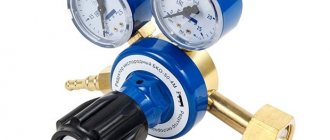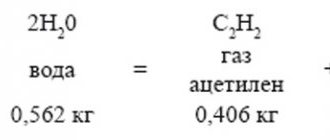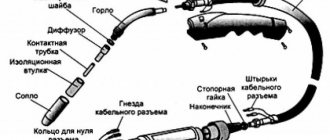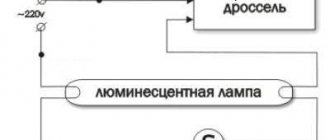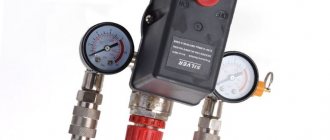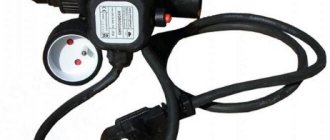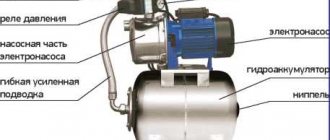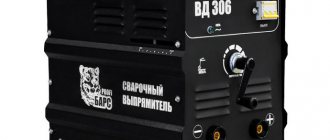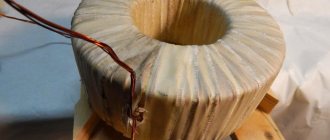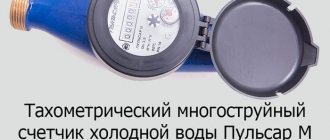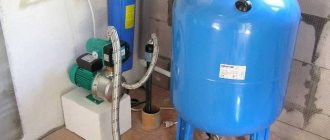Protect your eyes | 04/08/2017
The oxygen in the cylinder used in gas-acetylene welding is under a pressure of 135...150 atmospheres, so the gas pressure should be significantly reduced before work. This role is performed by the oxygen reducer. This device not only reduces the oxygen flow, but also ensures constant operating pressure throughout the entire welding process.
Purpose of the oxygen reducer
Oxygen is an integral component of the so-called gas welding or metal cutting. It is delivered to the work site in cylinders made of steel and painted blue.
To ensure the supply of oxygen under operating pressure, reducers are used. In accordance with GOST 13861-89, these devices are marked as follows - BKO, SKO, RKO. The first abbreviation means that the reducer is used for installation on oxygen cylinders, single-stage (D - two-stage). The second is a network Product, and the third is a ramp Product.
Several types of these devices are produced - BKO 25 and BKO 50. The first type provides oxygen supply up to 25 cubic meters per hour, the second 50. The maximum operating pressure parameter of the first model is 0.8 MPa, for the second 1.25 MPa.
A union nut is used to connect the oxygen reducing device.
The gearbox uses the following principles in its operation:
- The gas passes through the filter and is supplied to the high pressure chamber. Rotation of the regulator transfers the force of the installed spring through the disk, diaphragm and pusher directly to the valve. It is he who regulates the flow of oxygen into the working volume.
- The unit in which the pressure changes occurs is a separate assembly unit consisting of a seat, a valve with a spring and an EF-5 filtration device. To increase safety, a valve is mounted on the device body, designed to release gas when a critical pressure level in the working chamber is reached from 16.5 to 25 kgf per square centimeter.
Oxygen reducer pressure gauge
As part of the oxygen reducer, pressure gauges are used, one shows the pressure value in the cylinder (network), and the second shows its output parameter. The oxygen mixture is supplied to the welding zone through a hose with a diameter of 6 mm or more. The hose is connected to the fitting, and a cutter or burner is installed at the other end.
Carbon dioxide reducer: purpose
The carbon dioxide reducer is designed to regulate and reduce the gas pressure that comes from the network or cylinder, as well as to maintain a constant value of the operating gas pressure.
According to GOST 6668-78, carbon dioxide gearboxes are classified into the following types:
- central (C) – CDC;
- universal (U) – UVN, UKN;
- network (N) – SAO, SKO, SMO, SPO;
- balloon (B) – BKD, BKO, BPO;
- ramp (R) – RPD, RKZ, RAD.
According to GOST 13861-89, carbon dioxide gearboxes for gas-flame processing of metals are classified:
- according to the operating principle: direct-acting gearboxes;
- reverse action gearboxes;
- single-stage with spring pressure setting (O);
Carbon dioxide reducers are black in color and differ from each other in the way they are connected to the cylinder or network.
Carbon dioxide reducer: operating principle and design
Carbon dioxide gearboxes used in modern industry for gas welding and metal cutting differ in their operating principles.
Direct-acting gearboxes have a decreasing characteristic (the operating pressure decreases as gas is consumed), while reverse-acting gearboxes have an increasing characteristic (the operating pressure increases as the gas pressure in the cylinder decreases).
To carry out the work, carbon dioxide reducers are connected to a gas cylinder using a union nut.
During operation, the gas, passing through the inlet filter, enters the high-pressure chamber. Adjustment of the working gas pressure during welding is carried out by rotating the adjusting screw. When it is turned clockwise, the force, through the pressure spring, sequentially acts on the pressure disk, diaphragm, pusher and pressure reducing valve. The reducing valve, as a result of this force, begins to move and opens the access of oxygen to the working chamber through the resulting gap between the valve and the seat.
Thus, the operating pressure is automatically maintained in the required range.
Modern balloon carbon dioxide reducers are available in various models and configurations. Depending on the model, some of them can be equipped with special devices - pressure gauges (low output and high input) pressure, which determine the gas pressure respectively leaving and entering from the reducer and into the reducer.
Carbon dioxide gearboxes are also produced without the specified measuring instruments.
Gas is drawn into the carbon dioxide reducer using a nipple attached to the reducer with a nut. A special sleeve is attached to the nipple itself, which goes directly to the gas cutter or gas burner.
Operation and checking the serviceability of the carbon dioxide reducer
Before operation, the carbon dioxide reducer must be checked for operability. The check includes:
- checking the serviceability of pressure gauges, the needles of which should be at zero; checking the adjusting screw, which must be turned out (valve closed);
- checking the pressure in the working chamber (checked after connecting the hose to the reducer);
- checking the tightness of the closure of the gearbox valve and the tightness of all connections (checked by closing the burner valve and unscrewing the adjusting screw);
- checking for possible leaks in the gearbox (checked with soap foam applied to the hole in the outlet fitting with the adjusting screw fully turned out).
Proper operation of a carbon dioxide gearbox ensures that no oils, grease or other contaminants come into contact with the gearbox.
Gas carbon dioxide reducers supplied by industry must have the following markings:
- trademark of the manufacturer;
- gear brand;
- year of issue.
Types of oxygen reducers
Gearboxes can be divided into two large classes – ramp and stationary. The former are distinguished by high gas throughput, reaching 120 cubic meters per hour. That is why they are installed to supply oxygen to combined welding stations. The second oxygen reducers are intended for personal use. They guarantee gas consumption ranging from 5 to 25 cubic meters per hour. It should be remembered that in appearance oxygen reducers are similar to each other.
GOST 13861-89 defines the following types of products for reducing oxygen pressure:
- On the cylinders - BKO, BKD and BPO.
- In the backbone network - SKO, SAO, SPO, SMO.
- Universal - U.
- Ramp ones - RKZ, RAD, RPD.
- Central action - CDC.
The key parameters of an oxygen reducing device are the ability to pass a certain volume of gas per unit of time and maintain a given gas pressure in the container.
Oxygen reducer BKO 50-4
Thus, BKO 50-4 provides a gas supply of 50 cubic meters per hour and with a pressure of 4 atm. BKO 50 – 12, at the same flow rate, maintains a pressure of 12 atm. By the way, devices of these models are most often used to equip working gas welding stations.
Oxygen reducer RKZ 500-2 (collection diagram)
RKZ 500-2 (ramp oxygen reducer) is designed for simultaneous supply of gas to several gas welding stations. These devices operate in a temperature range from -5 to +50 degrees Celsius. By the way, experts recommend equipping oxygen devices of this class with additional filters.
Read also: How to drill a marble monument
Types and characteristics. Gearbox BKO 50-4 and BKO 50-5
According to their technical parameters, reducers for oxygen cylinders are divided into two groups - ramp and station. Ramp gearboxes are characterized by increased throughput - from 100...120 m 3 /h, and therefore are used to power a group of welding stations, or for welding work with large volumes. Station reducers are for individual purposes; they provide oxygen consumption in quantities of 5...25 m 3 /h (lower values correspond to lower final gas pressures).
The housings of gas reducers are of the same type in appearance, so during manufacture they are painted in certain colors (for oxygen reducers this is blue).
GOST 13861 provides for the following versions of oxygen reducers:
- Cylinder type BKO, BKD and BPO.
- Network, such as SKO, SAO, SPO, SMO.
- Universal (U).
- Ramp (RKZ, RAD, RPD).
- Central (CDC).
The main technical characteristics of an oxygen reducer are its throughput and the operating pressure of the gas in the cylinder. For example, an oxygen reducer type BKO 50-4 means that the unit is designed to be connected to an oxygen cylinder, is single-stage, and is designed for a throughput of up to 50 m³/h at a gas operating pressure of 4 atmospheres. Accordingly, for the BKO 50-5 oxygen reducer the permissible operating pressure is 5 atmospheres. It is the BKO type gearboxes that are most often used for individual gas welding stations.
Additional operational features of oxygen reducers are:
- Number of reduction stages. Single-stage devices are produced, in which the pressure regulator is either a spring or another unit, and two-stage ones, where pressure regulation occurs gradually, using intermediate pneumatic chambers. Two-stage gearboxes provide more reliable operation of the welding station at low temperatures, are more stable in their characteristics, but are characterized by structural complexity and, therefore, increased price;
- Connection method. A union nut is used rather than a clamp, since the explosiveness of oxygen requires special requirements for tightness;
- Climatic performance. The requirement for reliable operation of the current regulator especially increases when gas welding is carried out not only at low temperatures, but also with large volumes. At high flow rates, the oxygen pressure quickly decreases, which is accompanied by an increase in the volume of gas remaining in the cylinder. This physical process accelerates the cooling of the gas and the reducer, as a result of which the device may become inoperable.
The fundamental differences of a two-stage oxygen reducer are a high-precision reducing valve and a double-layer membrane of increased area, which is made of high-strength synthetic rubbers. Such material is insensitive to changes in external temperature, due to which the membrane retains its functionality at negative temperatures and gas pressures of up to 150...200 atmospheres.
Design and principle of operation of an oxygen reducer
Reverse-acting devices have become widespread in practice. The reason for this is their minimal dimensions and the design simplicity of the product.
Oxygen reducer design
The body of this device contains two consecutive vessels. The first is a high-pressure container, it receives gas from a cylinder or from a gas supply line. A valve is mounted between the containers, controlled by two springs acting on the membrane. The valve stroke directly depends on the force developed by these springs.
The spring installed in the first chamber is adjusted using an adjusting screw. It adjusts the stroke of the control valve. To close it, just turn the screw all the way.
The low pressure chamber is directly connected to the burner (cutter), that is, the pressure level in the container determines the level of gas pressure on the burner (cutter). If the gas flow exceeds the volume supplied, the pressure in the first tank will drop. In this case, the spring will press on the membrane with great force and as a result the valve will open to a greater extent and the volume of gas supplied will increase. If the flow rate is reduced, the spring will return the valve to its place. Thus, automated regulation of operating parameters in the reduction device occurs.
Pressure gauges are mounted on the body of the oxygen reducer. The first sensor shows its numerical value in the cylinder, the second shows it on the working element (cutter, burner).
Gearbox elements
The carbon dioxide reducer supplies carbon dioxide under a certain pressure. In addition, the same device shuts off the supply of volatile substances when it is necessary to finish welding. Structurally, this device consists of the following elements:
- gas inlet valve and sealing elements;
- chamber with a regulating type membrane;
- gas release valve;
- two types of springs - upper and control;
- fitting for connecting a welding machine;
- frame;
- It is necessary to have two pressure gauges that monitor the pressure of carbon dioxide both at the inlet and outlet;
- shut-off valve.
Oxygen reducer characteristics and design features
In addition to the key parameters in the form of flow and pressure, gearboxes have the following additional characteristics:
Oxygen reducer characteristics
- Number of pressure reduction stages. Manufacturers produce devices with one or two stages of regulation. In the first, the main role is played by the spring. In models with two stages, adjustment is carried out using intermediate air chambers. These products guarantee the operation of the gas welding workplace in conditions where the temperature is below zero. In addition, these reducers guarantee a stable gas supply. But they differ in design complexity and, accordingly, cost.
- All oxygen reducers are connected to the gas source using a union nut. Clamps and other fastening devices must not be used. This is caused primarily by the explosive properties of oxygen, which require high-quality sealing of the connection.
- Another parameter of oxygen reducing devices is the climatic design. This indicator is important. The fact is that a drop in pressure leads to an increase in its volume. This leads to overcooling of the reducer and gas, which can lead to damage to the device.
Oxygen reducer device features
The two-stage oxygen reducer is distinguished by a valve manufactured with high precision and a membrane assembled from two layers of material. Synthetic rubbers are used for its manufacture. This allows the device to remain operational at temperatures below 0 and pressures up to 200 atm.
Design features and maintenance
There are 2 types of gases used in industry and everyday life:
- inert;
- flammable.
The adapters on them are fundamentally different, so as not to confuse them. For inert gas cylinders, the connection between the reducer and the cylinder is made with a right-handed, standard thread. Oxygen, propane, carbon dioxide, methane and other flammable gases are connected to the reducer by screwing it into a hole with a left-hand thread - counterclockwise.
Multi-directional threads eliminate the possibility of filling the container with the wrong type of gas and using the cylinder for purposes other than its intended purpose.
Gearboxes have a membrane inside that wears out. The gearbox must be tested every 5 years. In this case, the membrane is replaced with a new one. In reducers for composite cylinders - made according to European standards, the membrane is designed to operate for at least 10 years, but the equipment must be tested after 5 years.
There is a marking on the top of the case indicating the year of manufacture of the unit and the first verification. During the subsequent test, the next date is entered.
The gearbox must be lubricated regularly and checked for leaks. If necessary, the gaskets must be changed.
Instructor, college teacher at the Donmet plant P.V. Sarkizov: There is an opinion among amateurs that a gearbox with a rotameter allows you to use gas economically. In practice, the devices differ only in their readings. The second pressure gauge on the reducer shows gas flow per minute. This value is inherent in the welding modes. The rotameter shows the actual pressure in the working chamber at the moment. To set operating parameters, you need to recalculate the rotameter readings using a coefficient or use a conversion table.
Gearboxes with 2 rotameters are designed for welding refractory metals and with high heat transfer. A welding torch is connected to the first, and a nozzle for heating the back side of the seam is connected to the second. You cannot connect 2 devices."
How to work with an oxygen reducer
When working with oxygen reducers, it is necessary to carry out several preparatory operations.
- Check the serviceability and integrity of the pressure sensors. The arrows must be set to zero and not change their position when turning the gearbox.
- Before connecting the gas supply hoses, it is necessary to check whether the operating screw that regulates the closing of the valve is turned out.
- After connecting the hoses, it is necessary to configure the device to supply the pressure necessary to perform the work.
Working with an oxygen reducer
In addition to the above operations, it is necessary to check the gearbox for leaks. To do this, the screw must be unscrewed completely.
Check the threaded connection for traces of oil and grease; if found, they must be removed immediately using a solvent.
By the way, you can check the tightness by applying soap foam to the threaded connections. If bubbles appear, work must be stopped and the gearbox must be sent in for repair.
What else you should know when working with a gearbox
As you know from a school chemistry course, oxygen is a strong oxidizing agent and therefore work with it must be carried out in strict accordance with the requirements of safety and labor protection rules. In particular, oxygen and oils must not be allowed to come into contact; such contact will result in an explosion.
Gas is often delivered to workplaces in cylinders with a pressure of 14.7 MPa. Therefore, when handling them, certain safety rules must be observed. In addition, the cylinder must not be dropped, hit, stored from fire, etc. The oxygen reducer installed on it must be covered with a durable casing.
Read also: Rotary hammer with increased impact energy
Areas of application
The bulk of technical oxygen is used for gas welding work. At the work site, the oxygen pressure is reduced to the operating level using a reducer. For this purpose, balloon or ramp varieties are used, depending on the method of oxygen delivery (cylinders or line).
Another industry that consumes oxygen is medicine. The technical equipment of this industry is not much different from the field of gas welding work. Gas is delivered in cylinders, then the pressure is reduced by reducers and distributed to the wards and beds. The oxygen supplied is medical grade, standardized. The gas contains at least 99% oxygen and 1% nitrogen. No other impurities are allowed.
Causes of gearbox failures
Like any technical device, the oxygen reducer is susceptible to problems that arise during operation. Thus, oxygen leakage may occur due to the fact that the seal between the valve and the chambers is broken. This may be because the hard rubber seat seal has worn out, or because foreign particles have entered the valve mechanism.
When operating in winter, the oxygen reducer may freeze. To prevent this phenomenon, the valve of the cylinder must be closed and blown with warm air. This will remove both ice and excess moisture. By the way, it is strictly prohibited to use fire to heat the gearbox.
There are frequent cases when the gearbox becomes clogged with foreign particles. To prevent this, the filter must be periodically blown or washed.
Application area
Gearboxes of this type are used in almost all sectors of the national economy. In industry - for assembling and cutting metal structures, in medicine, for organizing the supply of gas to wards and operating rooms.
Performing gas-flame work
Oxygen reducers are used in various industries. In particular, when performing gas-flame work. The reducer ensures a constant supply of gas. In medicine, reducers are installed in the oxygen supply system throughout the wards. Air supply systems in aviation and maritime transport cannot do without such devices.
If you find an error, please select a piece of text and press Ctrl+Enter.
Scope of use
Oxygen reducers are used in various fields of activity. In addition to gas-flame work, for which the devices are most often used, they are used in medicine, where they are installed in oxygen supply systems to hospital beds. Another area of use of the oxygen reducer is air supply systems, which are actively used in marine and aviation transport.
Many owners of semi-automatic welding machines, gas and argon-arc welding experts are familiar firsthand with the gas supply device for their devices. For many beginners, we have already described the methods of preparing and setting up a semi-automatic welding machine, as well as the rules for caring for it, but some visitors still had questions about connecting a gas cylinder to a p/a and choosing a reducer for the cylinder.
Criterias of choice
Gas reducer is the general name for devices that automatically maintain stable operating pressure of gas from a cylinder during operation. The variety of properties of gaseous substances determines various design solutions for equipment used with them. Depending on the gas being reduced, the following types of reducers are distinguished:
- oxygen;
- propane (industrial and household);
- acetylene;
- carbon dioxide;
- argon;
- nitrogen;
- for compressed air;
- helium;
- for nitrous oxide.
Based on the principle of operation, there are direct and reverse acting devices. In the first case, the operating state decreases along with the input pressure of the consumed gas, and in the second, it maintains the output pressure, regardless of the flow rate. The design is affected by the flammability of the gas being reduced, therefore, to increase safety, gearboxes that regulate the supply of inert substances are equipped with a right-hand thread for connection, and flammable ones with a left-hand thread. It is necessary to strictly observe the compliance of the devices used with the type of gas being reduced. Inconsistency is unacceptable! In our catalog you will find a reducer for a gas cylinder with any gas!
In many situations, for example when working with a gas burner, it is necessary to change the outlet pressure. In this case, it is best to use a gas reducer for a cylinder with a regulator. Such products are usually available with one or two pressure gauges to control pressure.
Our services
A gas reducer is a mandatory device for operating gas cylinders under pressure. Moscow is a huge industrial center with great needs. The GazExpo company has been supplying gases in cylinders for domestic and industrial needs in the Moscow region for more than 10 years.
Our company has its own production of many types of gases used in industry. A reducer for a gas cylinder, adjustable using a conventional valve, is a simple and reliable solution that has proven its effectiveness in practice. We supply products from leading manufacturers of gas equipment. We have a wide selection and reasonable prices! Buying here is not only easy, but also profitable. We try to create a special purchase offer for each client that will interest him.
The Centrogaz company offers domestically produced oxygen reducers for sale. You can buy a reducer for an oxygen cylinder in our online store or at any of our warehouses in Moscow.
Pressure gauges
To measure excess gas pressure, instruments called pressure gauges . Spring pressure gauges are used on oxygen and acetylene gearboxes . The main part of the pressure gauge is a curved sealed tube through which gas is passed. Under gas pressure, the tube straightens more, the higher the pressure. The tube is connected to the arrow, and the movement of the tube is transmitted to the arrow. Pressure gauges are designed for a certain pressure. Each pressure gauge has a red line corresponding to the highest permissible pressure. It is strictly forbidden to load pressure gauges with pressure exceeding their upper limit of change.
It is not allowed to use pressure gauges when there is no seal or stamp, the inspection period has expired, the pressure gauge needle does not return to zero when the gearbox is turned on, the glass is broken or there is other damage. Pressure gauges are checked at least once a year.
Pressure gauges are connected to the high and working pressure chambers with a wrench; fiber and leather gaskets are used for sealing.
What is an oxygen reducer
An oxygen reducer is a device used to reduce and maintain at a certain level the pressure of oxygen supplied from a gas supply network or cylinder. The gas pressure at the outlet of the reducer is maintained automatically and does not depend on pressure drops in the cylinder, monoblock or gas pipeline.
Oxygen reducers are divided into the following types: cylinder, network, ramp and special. Mostly single-stage reducers are used, but in some cases, for example, to reduce pressure more than 300 atm or to obtain results of increased stability of oxygen supply, two or more stage reducers are used. In addition, devices vary in bandwidth. The type and some technical characteristics are indicated in its labeling.
Read also: How to make a carpentry table
Example of oxygen reducer marking
The marking of the BKO-50MG gearbox is deciphered as follows:
- BKO – Cylinder Oxygen Single Stage
- 50 – (highest throughput measured in m3;/hour)
- MG – Small-sized (i.e., reduced in size compared to the BKO-50-4 gearbox (the last digit in the marking of this gearbox is the manufacturer’s number)).
Main characteristics
Prices for oxygen reducers are largely determined by their characteristics. We offer our customers several models of control devices with different technical parameters.
| Parameter | Meaning |
| Maximum throughput, m3/h | 5…500 |
| Maximum gas pressure at the inlet, MPa (kgf/cm2) | 0,3 (3)…20 (200) |
| Maximum operating gas pressure, MPa (kgf/cm2) | 0,1 (1)…1,6 (16) |
| Working pressure unevenness coefficient, i, no more | 0,3 |
| Operating pressure drop coefficient, R, no more | 0,3 |
| Maximum response pressure of the safety valve, MPa (kgf/cm2) | 0,8 (8)…2,5 (25) |
| Dimensions | Name 125×97×88 Naib. 161×136×221 |
| Set weight, kg | 0,47…13,0 |
It is worth remembering that in the standard version, oxygen reducers can be operated at temperatures of -25 ºС…+50 ºС. An input filter is required. A person working with such a device must ensure the cleanliness of all parts in contact with oxygen. They must be cleaned and degreased. Oil stains may cause a fire.
If you want to buy oxygen reducers or find it difficult to choose the right model, call us +375 17 345-50-71. We guarantee professional advice and an individual approach to service!
Application
Geared equipment is used in various industrial and domestic areas where regulation of oxygen supply is required:
- Gas welding: maintaining a stable supply of gas, which is necessary to comply with the process technology.
- Medicine: uniform supply of oxygen to provide artificial respiration to seriously ill patients.
- Food industry: production of fizzy drinks, confectionery products.
In addition, it is used in some areas of the chemical industry (production of synthetic materials) and in the production of cellulose (as a binding component).
Specifications
Maximum permissible load:
- at the entrance to the receiving tank – 200 kgf/cm2,
- at the exit from the working compartment - no more than 12.5 kgf/cm2.
For oxygen cylinders, ramp and station reducers are used. The former are characterized by greater throughput (from 80 m3/hour). They are used for welding work at large specialized enterprises that use the simultaneous connection of several welding machines or posts. The second (up to 25 m3/hour) are used for individual use.
When purchasing a reducer for an oxygen cylinder, the buyer should pay attention not only to the technical characteristics. The appearance, the materials from which the product is made, the manufacturer - all this will affect its subsequent use. For example, the gearbox housing must be made of oxidation-resistant metals, and there cannot be fatty deposits on the surface of the parts.
Characteristic
- Oxygen - designed to regulate the supply of oxygen in the cylinder. Common markings: SKO - 10-2, BKO - 50 mini, RK-70, RKZ - 500-2. Painted blue, secured with union nuts. Capacity from 10 to 500 m3/hour. The price varies from 1600 to 21500 rubles.
- Propane - regulates the supply of propane. Markings: BPO - 5, SPO - 6, RDSG-1-MTL (frog). Painted red, secured with union nuts. Throughput from 1.5 to 1.6 m3/hour. Price – from 400 to 1600 rubles.
- Carbon dioxide - to regulate the supply of carbon dioxide. Markings: UR-6-6, BUO-5-4. Can be painted black or red and blue. Fastened with union nuts. Capacity 5-6 m3/hour. Price 900-1500 rubles.
- Acetylene - regulate the supply of acetylene. Markings: BAO-5-4, RAO-30-1, SAO - 10. Fastened with clamps. Painted white. They pass from 5 to 30 m3/hour. Price from 1600 to 14300 rubles.
- Argon. Markings are: AR-40-4DM, AR-40-KR1-mr. Color white or black. They pass 1.8-5.4 m3/hour. Price 1400-1750 rubles.
- Helium. For helium regulation. Marked: G-70-KR1, G-70-KR1-m. Fastened with nuts. Color white or black. Bandwidth 4.2. Price about 1500.
throughput (highest value) m3/h
gas pressure at the inlet, (maximum value) MPa (kgf/cm2)
operating gas pressure, (maximum value) MPa (kgf/cm2)
The oxygen in the cylinder used in gas-acetylene welding is under a pressure of 135...150 atmospheres, so the gas pressure should be significantly reduced before work. This role is performed by the oxygen reducer. This device not only reduces the oxygen flow, but also ensures constant operating pressure throughout the entire welding process.
Features of the start of operation
Before you start using the oxygen reducer, check its tightness. To do this, you need to tighten the burner valve and unscrew the adjusting screw. The pressure gauge needle should move up and not move. In addition, you can check for leaks by applying a soap solution to the opening of the fitting.
Before starting operation, a welding hose is connected to the oxygen cylinder reducer, after which you can open the valve on the burner and set the required pressure in the working chamber with the adjusting screw. A decrease in readings on the pressure gauge indicates a leak.
, which most often occurs due to a loose connection of the “sleeve”. After completing the work, the valve on the cylinder is closed and gas is released from the chambers.
Rules for safe operation
Considering the explosion and fire hazard of oxygen, such products, in accordance with GOST 12.2.008-75, must be periodically subjected to thorough routine maintenance. In relation to oxygen reducers of type BKO 50-4 and BKO 50-5, maintenance rules include:
- Checking the movement of the adjusting screw/flywheel from one extreme position to another: it should be smooth and without jamming.
- The connecting elements must not have external mechanical damage - cracks, scratches, and also be cleaned of oil, grease and dirt.
- Periodic checking of pressure gauges should not be less than once a year. The criterion for the need for verification is considered to be increased inertia of the instrument needle.
- Parts that do not meet the operating conditions of oxygen reducers cannot be used as sealing elements - gaskets, nipples, etc.
- Before each use, the tightness of the connections is checked (using a pressure gauge); leakage of oxygen from the cylinder is unacceptable.
- When an oxygen cylinder is connected to the reducer, it is prohibited to make any adjustments.
- According to labor safety rules, it is necessary to provide for the installation of safety devices between the reducer for the oxygen cylinder and the rest of the gas welding equipment, including those for extinguishing the flame. These can be check valves designed for the pressure in the cylinder, as well as safety valves.
The price of an oxygen reducer is determined by its design and operational capabilities. For single-stage gearboxes, the price ranges from 1800...2000 rubles. (BKO 50-4) and 1100...1200 rub. (BKO 50-5). Two-stage devices (for example, BKD-25 or Multi-Stage RG S2 O2 made in Czech) are much more expensive - 11,000...12,000 rubles.
Operation of the gearbox.
Before connecting the oxygen reducer, you must carefully check whether there are any traces of oil, etc. on the fitting and union nut. If traces of fatty substances are found, the reducer must be washed in some solvent (for example, aviation gasoline).
Next, you need to check the serviceability of the thread of the union nut, clean it from dirt and dust, and also check the presence and serviceability of the fiber (for oxygen gearboxes) or leather (for acetylene gearboxes) gasket, on which the tightness of the connection between the gearbox and the valve depends.
After blowing out the oxygen valve of the cylinder or line to remove dirt or chips from them that could get into the reducer and damage its valve, the union nut of the oxygen reducer is screwed to the valve fitting and secured with a wrench.
In the same way, it is necessary to purge the valve of the acetylene cylinder before attaching the acetylene reducer to it.
Before releasing gas into the reducer, its adjusting screw must be turned out until the pressure spring is completely weakened, so that when opening the cylinder valve, the reducer cannot be damaged. The shut-off valve on the gearbox must be open. A hose is attached to the hose nipple of the gearbox and secured firmly with clamps or soft wire.
To release gas into the reducer, you must smoothly open the cylinder valve half a turn of the handwheel. If no abnormalities are observed, then the cylinder valve should be opened all the way and by rotating the pressure control screw of the gearbox clockwise, set the required operating pressure using the pressure gauge. The operating oxygen pressure is set when the cutter valve is open.
When, due to the presence of oil or a sudden release of oxygen, a flash or strong heating of the gearbox occurs, it is necessary to quickly close the cylinder valve, and remove the gearbox and send it for repair.
After establishing the operating pressure, it is necessary to check whether there are gas leaks at the joints, along the threads of pressure gauges, etc. Gas leaks are dangerous, since acetylene and other flammable gases form explosive mixtures with air.
After checking, the torch is ignited and the flame is adjusted.
During operation, it is necessary to ensure that there are no leaks, freezing, etc. in the gearbox.
When you stop working for 2-3 minutes. Only the valves on the cutter can be closed. If work stops for 10-15 minutes, then in addition to the cutter valves, close the gearbox shut-off valve without changing the position of the control screw. During breaks in work for more than 10-15 minutes. You should additionally loosen the pressure spring by unscrewing the adjusting screw.
During long breaks and at the end of work, the valve of the cylinder or line is closed and the gas remaining in the reducer is completely released. Then, by turning the adjusting screw counterclockwise, the pressure spring is weakened.
Delivery of oxygen reducers
Delivery cost in Moscow and the Moscow region: by courier – 400 rubles. (restrictions on courier delivery - no more than 50 kg and no further than 20 km from the Moscow Ring Road towards the region).
Delivery to other regions is carried out by transport companies. How to choose a transport company is described on our website in the Delivery in Russia section.
Contact number for receiving orders for delivery: +7 (495) 921-34-24 (accepted on weekdays from 9.00 to 17.00, on Saturdays from 10.00 to 14.00, and on the website - around the clock).
